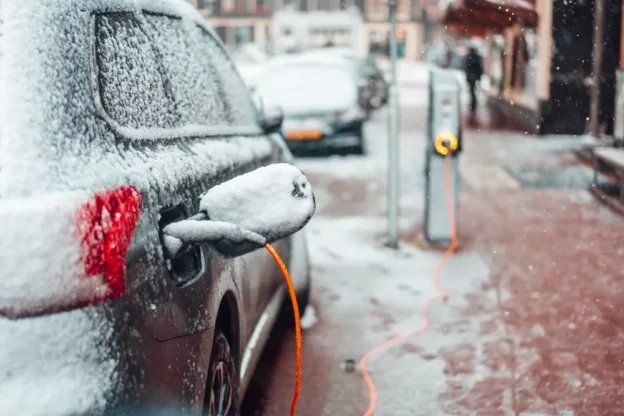Researchers at the University of Birmingham are working on an energy storage system that combines “microwave energy” and a “chemical heat pump” to produce heating or cooling, depending on the user’s demands.
The device is nicknamed “e-Thermal bank“designed as a secondary power source for electric vehicleswhich canharness electricity to drive a high-density thermochemical system (1600 Wh/Kg). Or in other words, an available and electrically efficient thermal bank.
The process of charging with “microwave energy”.
During unloading, the process is reversed by feeding steam to a reactor to generate heat, while the opposite phase uses an evaporator to simultaneously generate cooling. In effect, this charging process stores the microwave energy inside the car, in the e-Thermal bank.
Professor Yongliang Li, Thermal Energy Engineering in the School of Chemical Engineering at the University of Birmingham’s School of Chemical Engineering University of Birmingham explained, “Our goal was to transfer these thermal management tasks to a microwave-driven process. Microwaves are a fast heating method because microwaves penetrate uniformly through materials and therefore deliver energy evenly to the body of the material..
Energy cost can be minimized by attaching a smart meter to charge the system. In this way, the stored energy would be available for use at any time. This is because by replacing the conventional HVAC and, “possibly a small portion of the battery pack,” the e-Thermal banks would provide efficient cabin temperature control and range extension of up to 70%.at a lower cost than increasing battery capacity,” Li added.
Increasing the battery capacity of electric vehicles
The “e-Thermal bank from the University of Birmingham is a simple but effective way to increase the driving range of electric vehicles. Other experts around the world have been working on technologies aimed at increasing the energy capacity of electric vehicle batteries.
Prof. Soojin Park and Dr. Hye Bin Son of the Department of Chemistry at Pohang University of Science and Technology (POSTECH) have developed a high-energy density lithium-ion battery using silicon microparticles and polymer gel electrolytesThe battery’s energy density is increased by up to 40%.
However, the use of silicon as a battery material presents several challenges. First, silicon increases in volume more than three times during charging and then shrinks to its original size while discharging, which negatively affects battery efficiency.
The use of silicon as an ideal material?
The use of nano metric size silicon (10-9 m) solves the problem. Unfortunately, the production process is not only very complex but also astronomically expensive, an impractical factor for commercial batteries.
The POSTECH research team has succeeded in developing an economical yet stable silicon-based battery system using polymer gel electrolytes. Unlike conventional liquid electrolytes, gel electrolytes exist in a solid or gel state in an elastic polymeric structure that exhibits better stability than their liquid electrolytes.
The scientists then used an electron beam to form covalent bonds between gel electrolytes and microsilicon particles. These covalent bonds disperse the internal stress caused by volume expansion, alleviating changes in microsilicon volume and improving structural stability.
A new discovery in performance
The result was remarkable: the new battery shows stable performance even with silicon microparticles (5μm), one hundred times larger than those used in traditional nanosilicon anodes. And the best part: the new battery has a 40% higher energy density than conventional lithium-ion batteries. In addition, the simple manufacturing process facilitates its commercialization and optimizes its use in future electric vehicles.
Don’t miss any of our posts and follow us on social media!
Inspenet.com YouTube LinkedIn Facebook Instagram
Source: University of Birmingham

